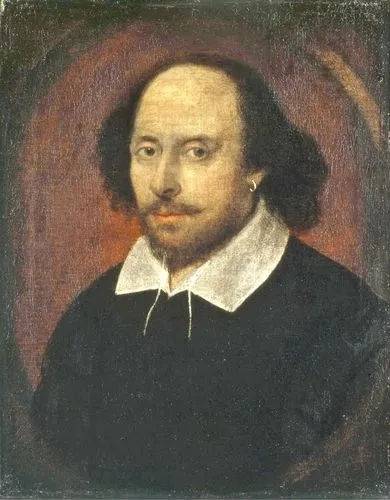Shakespeare: The Trendsetter of Drama and Fashion
By Zhang Wei
Shakespeare, renowned as one of the greatest playwrights in history, became an influential figure not only in the world of drama but also in the realm of fashion. His pursuit of fashion trends in the dramatic arts catapulted him to fame and established his everlasting legacy.
Arriving in London from the rural town of Stratford, Shakespeare was captivated by the metropolis’s scenery, the lives of the royal family and nobles, and the colorful dramas staged on London’s theaters. Being a newcomer to the theater world, he immersed himself in the art form, spending hours watching rehearsals and familiarizing himself with the techniques and elements of plays. It was during this time that he began to venture into writing his own works. In order to establish his name and gain recognition, Shakespeare followed the popular trends in the theater world, writing and composing plays that were favored by the audience, resulting in substantial box office success.
Historical records indicate that during the Renaissance period, various genres of drama were popular in British theater. Court dramas, aristocratic dramas, revenge dramas, ghost dramas, magic dramas, and elf dramas dominated the stage, with most of the plays performed by the “University Talent School” playwrights such as John Leigh, Robert Greene, Thomas Kidd, and Christopher Marlowe. Shakespeare, in his early career, imitated these college wits and produced plays like “Richard II,” “Richard III,” “King Lear,” “Henry IV,” “Henry V,” “Henry VI,” “Henry VIII,” and “Julius Caesar,” which showcased the roles of princes and nobles that were highly sought after at the time.
One influential playwright of that era was Thomas Kidd, known for his revenge dramas. In his play “The Spanish Tragedy,” Kidd narrated the story of Jerónimo seeking revenge for his son’s death, incorporating elements of ghost dramas, plays within plays, and inner monologues. Shakespeare’s “Hamlet” clearly drew inspiration from Kidd’s work, featuring the appearance of a ghost of an old king and the use of a play within the play to verify the guilt of Claudius, the usurper. However, Shakespeare’s “Hamlet” surpassed Kidd’s play in terms of richness of character development and philosophical exploration. It delved into profound themes of life and death, love and hate, the universe, and human existence, making it a world-class inquiry into the human condition.
Magic shows were also popular during that period. Christopher Marlowe’s “The Tragedy of Doctor Faustus” portrayed the story of Faust, a magician who could summon the devil Mephisto and even summon the ancient Greek beauty Helen. Robert Greene’s “Friar Bacon and Friar Bong” featured a “Magic Mirror.” Shakespeare incorporated magic into his plays, adding a touch of illusion, mystery, and peculiar elements to works such as “The Tempest” and “Macbeth,” captivating the audience’s curiosity and imagination. Shakespeare’s brilliance in this realm was exemplified by Prospero in “The Tempest,” who was not just a magician but also a usurped Duke who used magic as a means to reclaim his throne and promote justice, benevolence, and righteousness. The depth and complexity of Shakespeare’s portrayal of Prospero surpassed Marlowe’s Faust and Greene’s Bacon.
Another popular genre at the time was the ethereal and delicate elf plays written by John Lily. His works, such as “Alexander and Campasby,” “Endymion,” “Galasia,” and “Midas,” featured the appearance of elves and fairies who served different roles in the narratives. Shakespeare, inspired by Lily’s elf plays, incorporated similar elements into his own works. In “A Midsummer Night’s Dream,” Shakespeare introduced the concept of love potions administered by Puck, similar to the prank played by Cupid in “Galasia.” Additionally, magic and transformation in “The Tempest” drew similarities to the scenes in “Midas.” However, Shakespeare surpassed Lily’s model by infusing the elves with music, dance, and spiritual depth. Ariel, a character in “The Tempest,” not only yearned for freedom but also became a symbol of freedom in world literature. The richness and complexity of Shakespeare’s portrayal of elves elevated the spiritual realm of these characters.
Shakespeare’s keen observation of the fashion trends in drama enabled him to surpass his contemporaries. His genius creativity in form and depth of conception propelled him to the pinnacle of perfection, making him an exceptional playwright of his time. In order to attract audiences and readers, a successful writer must be aware of the fashion trends of the era. However, they must also transcend the confines of their time and push the boundaries of literature and art to achieve greatness.
Author: Zhang Wei
Editor: Qian Yutong
Disclaimer: The opinions expressed in this article are solely those of the author. Sohu is an information release platform that provides information storage space services.
Original Title: Shakespeare: The Trendsetter of Drama and Fashion | Zhang Wei
Note: This is an exclusive manuscript by Wenhui. Please indicate the source when reprinting. Visit Sohu for more articles.
